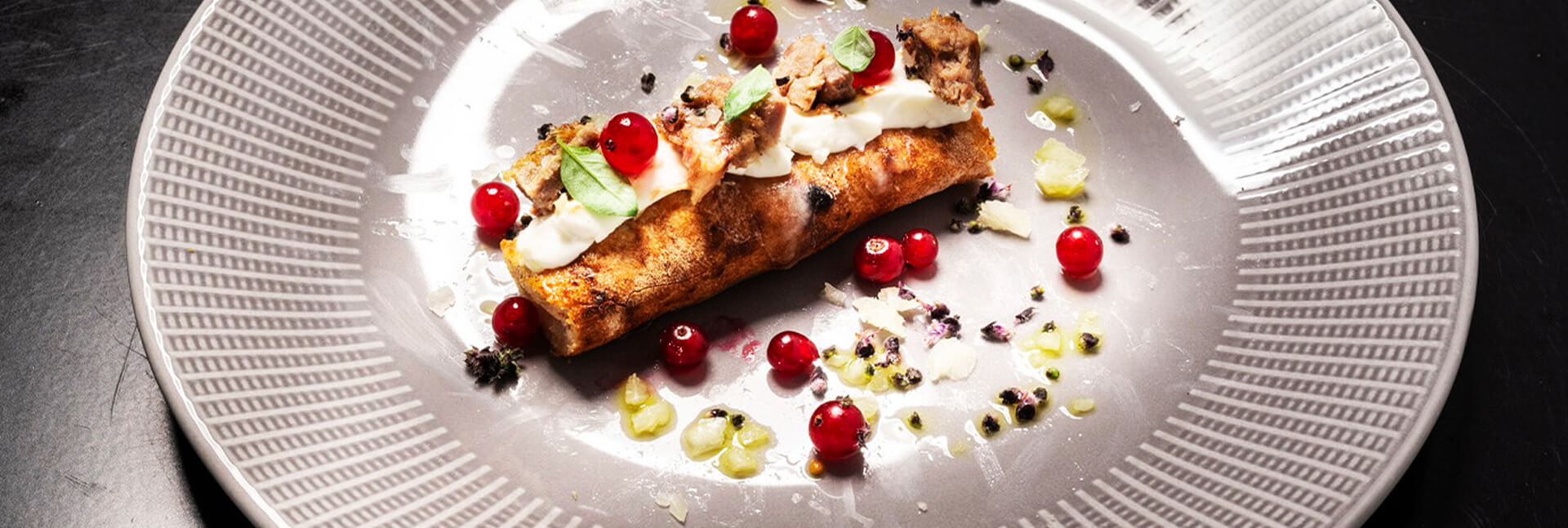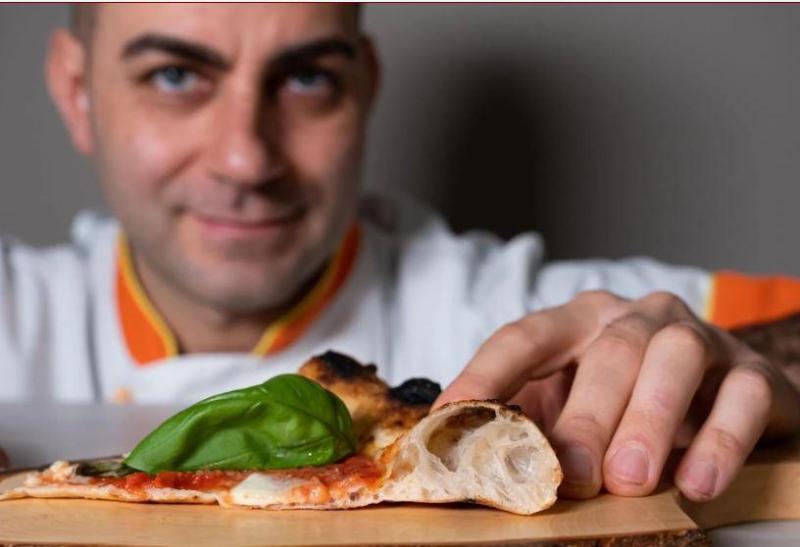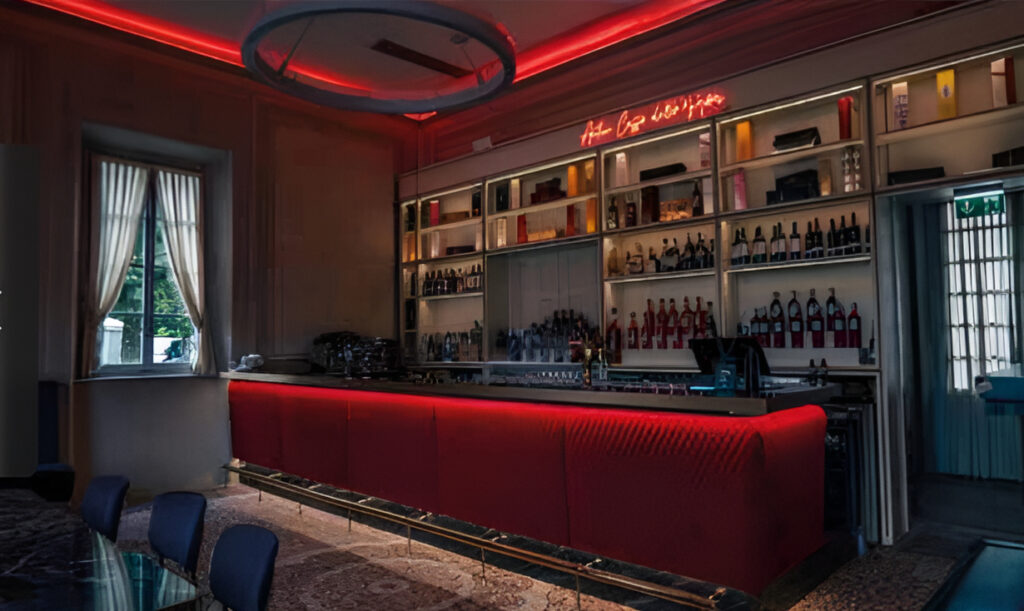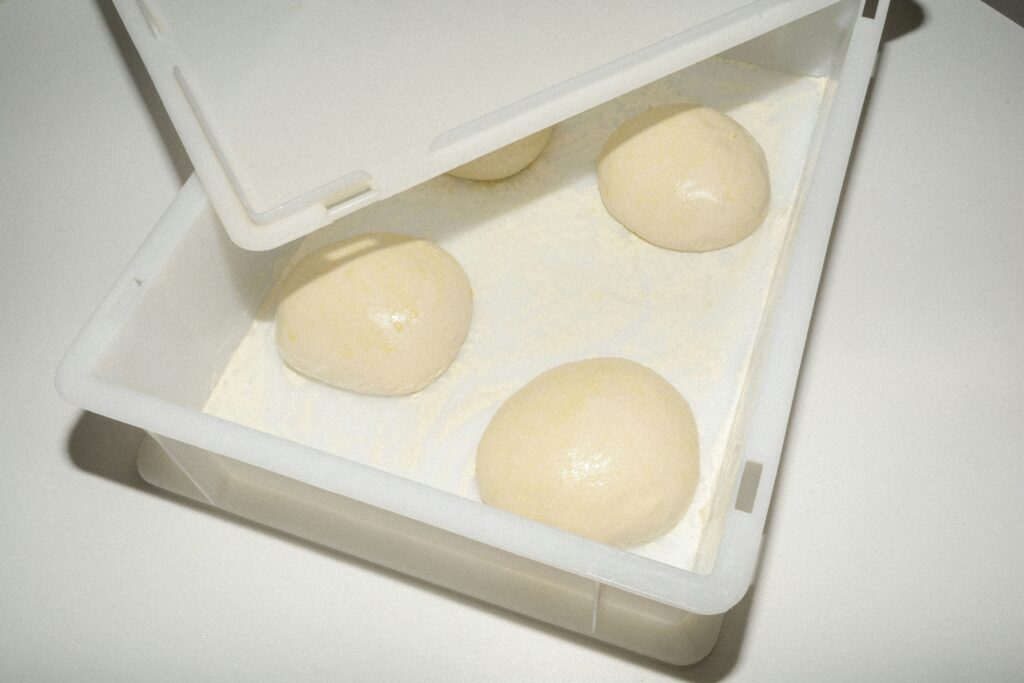
New trends in pizza making are leading to more and more elaborate pizzas and the pizza maker is getting closer and closer to the image of the chef, experimenting with new recipes and combinations.
The world of gastronomy seems to be characterized by a certain absence of boundaries. In this respect, it represents the ideal overcoming of any obstacle, animated as it is by a total globalization. Chefs from every continent move, learn and bring back home ideas, recipes, techniques and products. There’s more to it than that because, although it is a more stated than lived concept, at least on a large scale, cooking is undoubtedly a powerful form of culture. And culture generates exchange, knowledge and experience. The frenzy imposed by the rhythms and tools available today is now an established condition with which we have to live. If we stop to think, only twenty years ago, at the beginning of the twenty-first century, there was not yet that immense network of exchange that is the social world, characterized by a universal and in some ways almost alienating socialization.
And so, even a rather neat boundary – until some time ago – is crumbling under our eyes. As a matter of fact, kitchens have always been part of pizzerias and there are many realities that offer some properly cooked dishes as well as an excellent pizza, although to be honest they are very few. Anyway, comparison levels are essentially two. The first one is the so-called multi-purpose restaurant, the second one concerns a hotter and perhaps more topical issue, that of the comparison between chef and pizza maker and – once again, if there is one – of the limit between the skills of two professionals who once had very little in common. Just think back to the dawn of pizzerias in northern Italy, when it was enough to have a southern accent to be qualified as a good pizza maker, regardless of what the previous profession was.
Hence the sidereal distance existing between the main style of Naples, the mother city of pizza and the unlikely – although commercially successful – interpretations of the Po Valley; we are talking about years of short stops before cinema or home-movie, because after a pizza Margherita, a pizza Capricciosa or a four-cheese pizza, a medium beer or the usual carbonated drink, at the most you could have industrial profiteroles and in half an hour it was all over. In fact, the simple act of going out to eat pizza – we remember its origins as street food eaten “a portafoglio”, that is folded up in four – took place in a period of time that very rarely exceeded one hour.
Things have changed, at least partially, and the wind of transformation has come naturally from the north, because the great authentic Neapolitan tradition did not exist in the northern regions of Italy if not in minimal manifestations, lacking the necessary strength to be noticed. Then of course, once and for all, it would be necessary to solve the debate according to which there is only one pizza and all the rest are buns or leavened dough with other personalities. Let’s take for granted that this obstacle can be considered overcome and the world of pizza is now entirely accessible.

It is in the Veneto region that the overcoming of the definition boundary becomes clear; this happens thanks to a master of undisputed fame like Simone Padoan, who is impossible not to mention when talking about the evolution of the pizza universe. In 1994, he founded I Tigli in San Bonifacio, near Verona, and spent five years doing his research (and he hasn’t stopped yet, nor does he imagine he ever will). He invented what is now also known as pizza da degustazione (“tasting” pizza), which is cut into slices and filled as if the base were an haute cuisine dish.
This was the starting point for a wide-ranging trend, which attracted many followers – even too many – and created countless attempts of imitation, more or less successful. The question arises: where does pizza end and cuisine begin? Most likely this is now an outdated question, since another top pizza chef, Franco Pepe – from Caiazzo, in the province of Caserta – created Authentica. This is a sort of chef’s table dedicated to pizza, a space reserved for eight lucky guests with a wood-burning oven and a workbench where the well-known guru prepares and bakes his leavened deliciousness with a sommelier at his side.
These two masters’ pizzas are very different, but they share some peculiarities that make them similar to the dishes of a chef working in haute cuisine or fine-dining. The two pizza chefs have an endless passion for research and an absolute fussiness in its noblest meaning, aimed at the perfection of the combination between dough and ingredient, because the raw material can be nothing else but very selected. There is absolutely no compromise. That’s why it is necessary and dutiful to distinguish both in the world of pizza and in the cooking one between a “high” and an “ordinary” setting. Let’s be clear, as it happens for tradition and creativity, the level is high for any pizza, for they all have as a common denominator the absolute quality that is acknowledged by the public and experts. So, this is true for a pizza Margherita, as well as for Pepe’s “Margherita Sbagliata” (“wrong” Margherita) or the pizza “Carpaccio di gambero rosso, focaccia al mais e burrata” (red prawn Carpaccio, Focaccia with corn and burrata cheese) or the “Mangaliza” with Fior di latte cheese, wild pork cheek, violet cabbage, orange and chocolate by Padoan, with prices that reach 40 Euros in the case of the fish topping.
At such a high level, the assonance with prestigious cuisine is clear. For example, at the level of Denis Lovatel‘s pizza “Rivoluzione Vegetale” (Vegetable Revolution), at Ezio’s in Alano di Piave (BL); or, at that of Giacomo Devoto‘s “parte migliore della pizza” (best part of the pizza) at Officine del Cibo in Sarzana (SP). Here, the stuffed crust becomes the protagonist, along with real Neapolitan pizzas (he is a member of the True Neapolitan Pizza Association) and a remarkable selection of traditional Ligurian dishes that coexist under the same roof.

The watchwords, after all, start from the perception of the need to transform the concept of quality in daily practice; this is achieved by means of a strict selection of products and suppliers but also of the beverage offer, paying particular attention to the quality of the wine list that, together with a wide range of beers – especially craft beers – is the basis of an efficient reception. And this is how locations change too. They are no longer dull and (too) noisy, with hung and switched-on televisions, as well as inappropriate music at top volume; instead, they are comfortable and suitable for a longer stay, so that enjoying a pizza could become a peaceful experience, without the anxiety of having to leave the table to people crowded around waiting for the next turn.
This is happening and will still happen, especially in a difficult moment like this, in which great sacrifices in terms of space are required, but more professional management methods are used, resulting in a cost that brings the modern, quality pizzeria closer to the high-level trattoria. Is pizza therefore doomed to lose its value of popular food for every pocket? No, it will not be like that, however we should realize that high quality at bargain prices cannot exist. So, better a great pizza Margherita at ten Euros with proper tomato and mozzarella cheese, enjoyed in peace and easily digestible, rather than the same pizza with an unlikely fragrance offered to half the price in a sad place.



